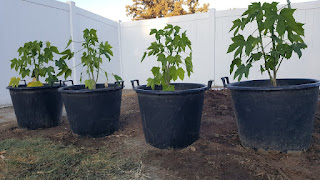ត្រចៀកក្រាញ់, Water pennywort, (Hydrocotyle umbellata)
ត្រចៀកក្រាញ់ (Hydrocotyle umbellata). Commonly known as Water pennywort, Marsh-Pennywort, Copper Coin, or Dollarweed. It's a culinary-medicinal plant that is well-loved among the Southeast Asian community.
Ones known as Water pennywort seems to be in reference to the glossy, thick, and scrip leaves varieties of pennywort such as Hydrocotyle, H. americana, H. bonariensis, H. bowlesioides, H. hirsute, H. ranunculoides, and others. And, H. sibthorpioides is closely related to these guys.
Ones known as Water pennywort seems to be in reference to the glossy, thick, and scrip leaves varieties of pennywort such as Hydrocotyle, H. americana, H. bonariensis, H. bowlesioides, H. hirsute, H. ranunculoides, and others. And, H. sibthorpioides is closely related to these guys.
They look, taste, and scent very much alike. But, there's one distinctive feature on the leaves of H. ranunculoides that sets it apart from others is that its leaves are lprominently toothed with a cleft in middle where the base of leave attached to petiole, whereas the others are with subtle toothed. And, Hydrocotyle bonariensis are usually with bigger leaves than that of H. umbellata. They're are subtly toothed with a continuous circle.
- A native to Cambodia and neighboring countries.
- Hydrocotyle umellata is a semi aquatic perennial herb. It can be found along fresh waterway in a tropical environment.
- A long petioles are born at each node, atop with a circular leave, attached right in the center like an umbrella.
- A delicate white flowers are formed in a globe like cluster atop an erected stalk that is also born at node.
- Tastes slightly bitter, salty like celery, scent carrots like.
- It is used in folk medicine for different purposes. My great-grandparents known to have used its extract to keep fever at bay.
- This variety of Pennywort is also eaten raw or cooked. It can be used in drinks, as a table condiments herb platter, in Salad, Soups, or a quick blanched in Strir Fry dish.
 |
| Top is in question, is it H. bonariensis? Is it fertilizer or is it fanatics? Bottom left C. Asiatica. Bottom right H. umbellata. |
 |
| Sowed fragments of tiny bity roots July |














Comments
Post a Comment